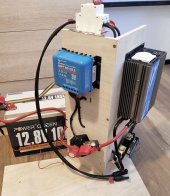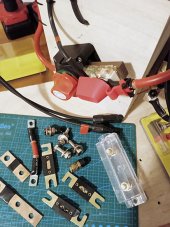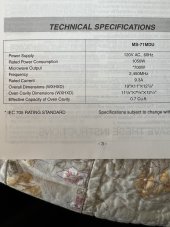@Camp20144
Sunday
Since I just managed to improve my system build fuse and wiring quality by going with MRBF all the way, thought to share.
Similarly, this build is made with further expansion in mind, ranging from 400W-800W solar going forward while @12v.
Before After
After
All in all, very satisfied with how the build is more streamlined now.

Best,
D.
Sunday
Since I just managed to improve my system build fuse and wiring quality by going with MRBF all the way, thought to share.
Similarly, this build is made with further expansion in mind, ranging from 400W-800W solar going forward while @12v.
Before
 After
After
All in all, very satisfied with how the build is more streamlined now.

Best,
D.
Last edited:



